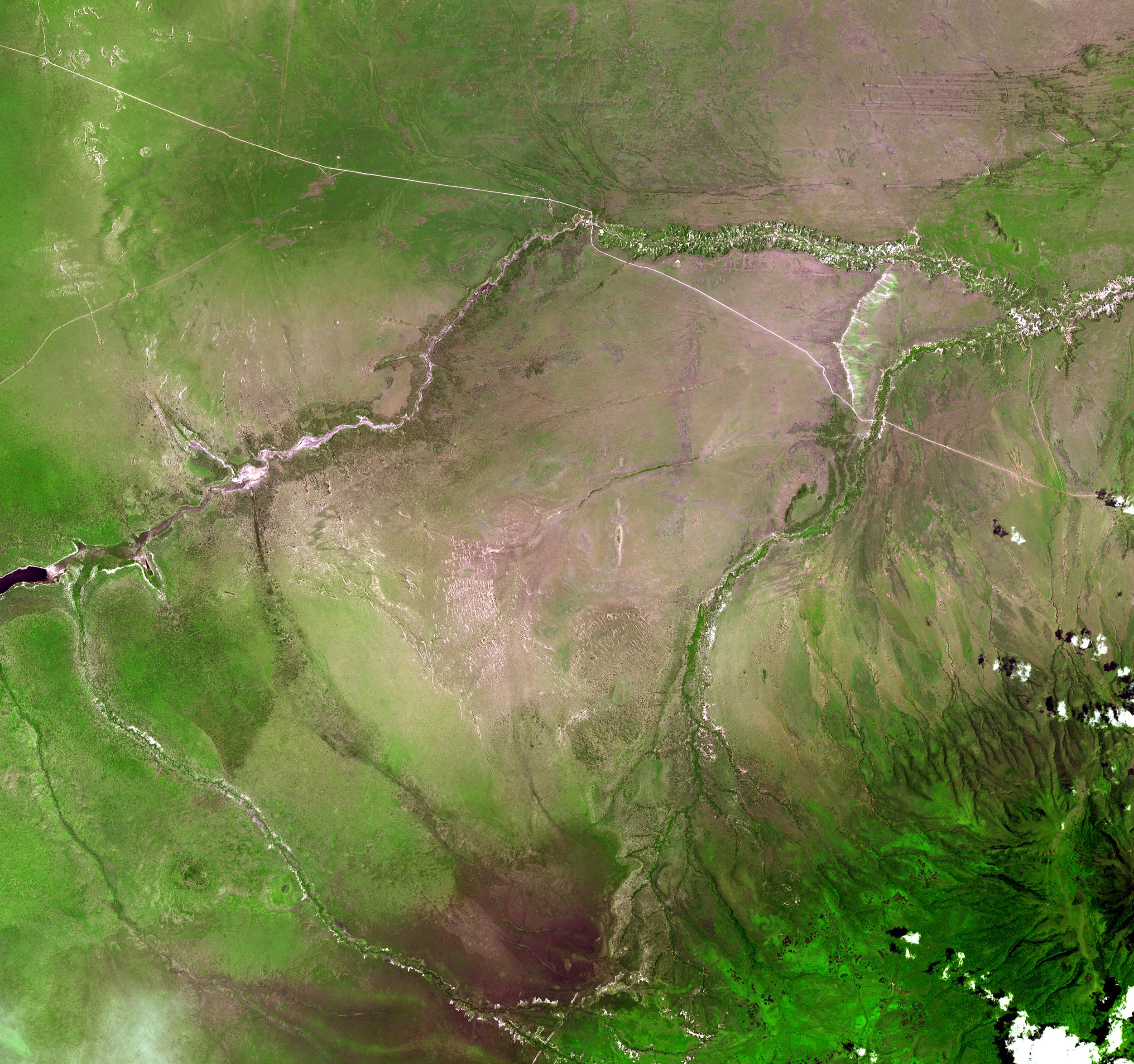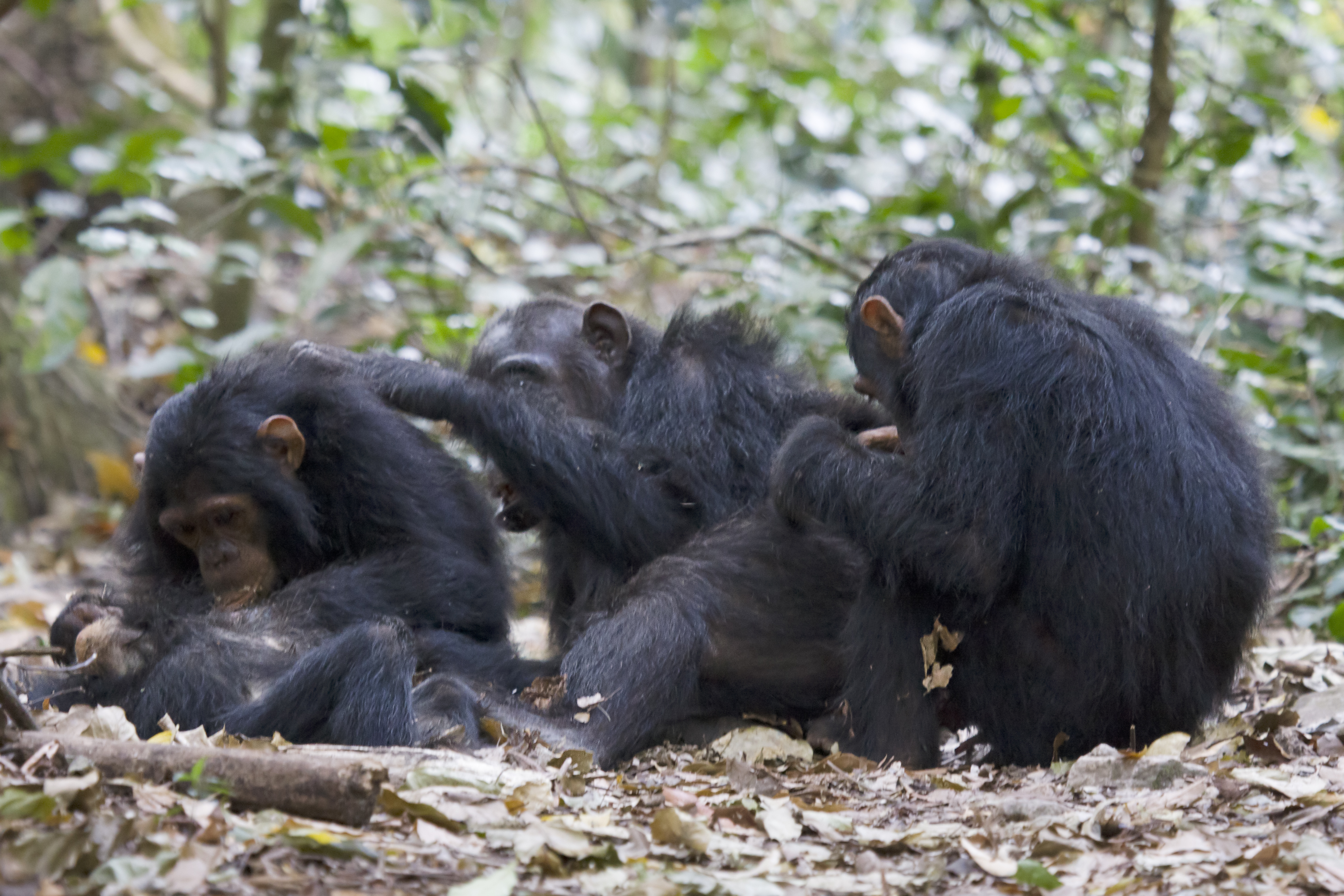|
The Trimates
The Trimates, sometimes called Leakey's Angels, is a name given to three women — Jane Goodall, Dian Fossey, and Biruté Galdikas — chosen by anthropologist Louis Leakey to study hominids in their natural environments. They studied chimpanzees, gorillas and orangutans, respectively. Jane Goodall 2015.jpg, Jane Goodall (2015). Tombe Dian Fossey.jpg, Grave of Dian Fossey. Dr Birute Galdikas.jpg, Dr. Birutė Galdikas (2011). Background Louis Leakey's interest in primate ethology stemmed from his attempts to recreate the environment in which the primate, ''Proconsul'', lived in the Rusinga Island region. He saw similarities between this environment and the habitat of the chimpanzees and gorillas. He had been trying to find observers since 1946. In 1956, he sent his secretary, Rosalie Osborn, to Mount Muhabura in Uganda to "help habituate" gorillas, but she returned to England after four months. Leakey was considering taking the job himself when Jane Goodall providential ... [...More Info...] [...Related Items...] OR: [Wikipedia] [Google] [Baidu] |
The New York Times
''The New York Times'' (''the Times'', ''NYT'', or the Gray Lady) is a daily newspaper based in New York City with a worldwide readership reported in 2020 to comprise a declining 840,000 paid print subscribers, and a growing 6 million paid digital media, digital subscribers. It also is a producer of popular podcasts such as ''The Daily (podcast), The Daily''. Founded in 1851 by Henry Jarvis Raymond and George Jones (publisher), George Jones, it was initially published by Raymond, Jones & Company. The ''Times'' has won List of Pulitzer Prizes awarded to The New York Times, 132 Pulitzer Prizes, the most of any newspaper, and has long been regarded as a national "newspaper of record". For print it is ranked List of newspapers by circulation, 18th in the world by circulation and List of newspapers in the United States, 3rd in the U.S. The paper is owned by the New York Times Company, which is Public company, publicly traded. It has been governed by the Sulzberger family since 189 ... [...More Info...] [...Related Items...] OR: [Wikipedia] [Google] [Baidu] |
Mountain Gorilla
The mountain gorilla (''Gorilla beringei beringei'') is one of the two subspecies of the eastern gorilla. It is listed as endangered by the IUCN as of 2018. There are two populations: One is found in the Virunga volcanic mountains of Central/ East Africa, within three National Parks: Mgahinga, in southwest Uganda; Volcanoes, in northwest Rwanda; and Virunga, in the eastern Democratic Republic of Congo (DRC). The other population is found in Uganda's Bwindi Impenetrable National Park. Some primatologists speculate the Bwindi population is a separate subspecies, though no description has been finalized. As of June 2018, there were more than 1,000 individuals. Evolution, taxonomy, and classification Mountain gorillas are descendants of ancestral monkeys and apes found in Africa and Arabia during the start of the Oligocene epoch (34–24 million years ago). The fossil record provides evidence of the hominoid primates (apes) found in east Africa approximately 22–32 m ... [...More Info...] [...Related Items...] OR: [Wikipedia] [Google] [Baidu] |
Vervet Monkey
The vervet monkey (''Chlorocebus pygerythrus''), or simply vervet, is an Old World monkey of the family Cercopithecidae native to Africa. The term "vervet" is also used to refer to all the members of the genus ''Chlorocebus''. The five distinct subspecies can be found mostly throughout Southern Africa, as well as some of the eastern countries. Vervets were introduced to Florida, St. Kitts and Nevis, Barbados, and Cape Verde. These mostly herbivorous monkeys have black faces and grey body hair color, ranging in body length from about for females, to about for males. In addition to behavioral research on natural populations, vervet monkeys serve as a nonhuman primate model for understanding genetic and social behaviors of humans. They have been noted for having human-like characteristics, such as hypertension, anxiety, and social and dependent alcohol use. Vervets live in social groups ranging from 10 to 70 individuals, with males moving to other groups at the time of sexual mat ... [...More Info...] [...Related Items...] OR: [Wikipedia] [Google] [Baidu] |
John Napier (primatologist)
John Russell Napier, MRCS, LRCP, D.Sc. (1917 – 29 August 1987) was a British primatologist, paleoanthropologist, and physician, who is notable for his work with ''Homo habilis'' and OH 7, as well as on human and primate hands/feet. During his life he was widely considered a leading authority on primate taxonomy, but is perhaps most famous to the general public for his research on Bigfoot. Biography Napier was an orthopedic surgeon at the University of London before being invited by Sir Wilfrid Le Gros Clark to join him in his paleoanthropology research. Napier then dedicated his life afterward to primatology, becoming the founder of the Primate Society of Great Britain, and was among the group, with Louis Leakey and Philip Tobias, that named ''Homo habilis'' in the 1960s.Human evolution: Homo |
William Charles Osman Hill
Dr William Charles Osman Hill FRSE FZS FLS FRAI (13 July 1901 – 25 January 1975) was a British anatomist, primatologist, and a leading authority on primate anatomy during the 20th century. He is best known for his nearly completed eight-volume series, '' Primates: Comparative Anatomy and Taxonomy'', which covered all living and extinct primates known at the time in full detail and contained illustrations created by his wife, Yvonne. Schooled at King Edward VI Camp Hill School for Boys in Birmingham and University of Birmingham, he went on to publish 248 works and accumulated a vast collection of primate specimens that are now stored at the Royal College of Surgeons of England. Early life and education William Charles Osman Hill was born on 13 July 1901 the son of James Osman Hill and his wife Fanny Martin. He was educated first at King Edward VI Camp Hill School for Boys in Birmingham, and later obtained his degrees from the University of Birmingham. During medical ... [...More Info...] [...Related Items...] OR: [Wikipedia] [Google] [Baidu] |
Olduvai Gorge
The Olduvai Gorge or Oldupai Gorge in Tanzania is one of the most important paleoanthropological localities in the world; the many sites exposed by the gorge have proven invaluable in furthering understanding of early human evolution. A steep-sided ravine in the Great Rift Valley that stretches across East Africa, it is about long, and is located in the eastern Serengeti Plains within the Ngorongoro Conservation Area in the Olbalbal ward located in Ngorongoro District of Arusha Region, about from Laetoli, another important archaeological locality of early human occupation. The British/Kenyan paleoanthropologist-archeologist team of Mary and Louis Leakey established excavation and research programs at Olduvai Gorge that achieved great advances in human knowledge and are world-renowned. The site is registered as one of the National Historic Sites of Tanzania. The gorge takes its name from the Maasai word ''oldupai'' which means "the place of the wild sisal" as the East ... [...More Info...] [...Related Items...] OR: [Wikipedia] [Google] [Baidu] |
Paleoanthropologist
Paleoanthropology or paleo-anthropology is a branch of paleontology and anthropology which seeks to understand the early development of anatomically modern humans, a process known as hominization, through the reconstruction of evolutionary kinship lines within the family Hominidae, working from biological evidence (such as petrified skeletal remains, bone fragments, footprints) and cultural evidence (such as stone tools, artifacts, and settlement localities). The field draws from and combines primatology, paleontology, biological anthropology, and cultural anthropology. As technologies and methods advance, genetics plays an ever-increasing role, in particular to examine and compare DNA structure as a vital tool of research of the evolutionary kinship lines of related species and genera. Etymology The term paleoanthropology derives from Greek palaiós (παλαιός) "old, ancient", ánthrōpos (ἄνθρωπος) "man, human" and the suffix -logía (-λογία) "study of". ... [...More Info...] [...Related Items...] OR: [Wikipedia] [Google] [Baidu] |
Africa
Africa is the world's second-largest and second-most populous continent, after Asia in both cases. At about 30.3 million km2 (11.7 million square miles) including adjacent islands, it covers 6% of Earth's total surface area and 20% of its land area.Sayre, April Pulley (1999), ''Africa'', Twenty-First Century Books. . With billion people as of , it accounts for about of the world's human population. Africa's population is the youngest amongst all the continents; the median age in 2012 was 19.7, when the worldwide median age was 30.4. Despite a wide range of natural resources, Africa is the least wealthy continent per capita and second-least wealthy by total wealth, behind Oceania. Scholars have attributed this to different factors including geography, climate, tribalism, colonialism, the Cold War, neocolonialism, lack of democracy, and corruption. Despite this low concentration of wealth, recent economic expansion and the large and young population make Afric ... [...More Info...] [...Related Items...] OR: [Wikipedia] [Google] [Baidu] |
Tanzania
Tanzania (; ), officially the United Republic of Tanzania ( sw, Jamhuri ya Muungano wa Tanzania), is a country in East Africa within the African Great Lakes region. It borders Uganda to the north; Kenya to the northeast; Comoro Islands and the Indian Ocean to the east; Mozambique and Malawi to the south; Zambia to the southwest; and Rwanda, Burundi, and the Democratic Republic of the Congo to the west. Mount Kilimanjaro, Africa's highest mountain, is in northeastern Tanzania. According to the United Nations, Tanzania has a population of million, making it the most populous country located entirely south of the equator. Many important hominid fossils have been found in Tanzania, such as 6-million-year-old Pliocene hominid fossils. The genus Australopithecus ranged across Africa between 4 and 2 million years ago, and the oldest remains of the genus '' Homo'' are found near Lake Olduvai. Following the rise of '' Homo erectus'' 1.8 million years ago, humanit ... [...More Info...] [...Related Items...] OR: [Wikipedia] [Google] [Baidu] |
Gombe Stream National Park
Gombe Stream National Park is a national park in Kigoma District of Kigoma Region in Tanzania, north of Kigoma, the capital of Kigoma Region.Tanzania National Parks“Gombe Stream National Park”, 2008. Established in 1968, it is one of the smallest national parks in Tanzania, with only of protected land along the hills of the eastern shore of Lake Tanganyika.The Jane Goodall Institute“Gombe Stream Research Centre” 2008. The terrain is distinguished by steep valleys, and the vegetation ranges from grassland to woodland to tropical rainforest.PBS: Nature“Jane Goodall’s Wild Chimpanzees” 1996. Accessible only by boat, the park is most famous as the location where Jane Goodall pioneered her behavioural research on the common chimpanzee populations. The Kasakela chimpanzee community, featured in several books and documentaries, lives in Gombe National Park. Besides chimpanzees, primates inhabiting Gombe Stream National Park include beachcomber olive baboons, red colob ... [...More Info...] [...Related Items...] OR: [Wikipedia] [Google] [Baidu] |
Bonobo
The bonobo (; ''Pan paniscus''), also historically called the pygmy chimpanzee and less often the dwarf chimpanzee or gracile chimpanzee, is an endangered great ape and one of the two species making up the genus '' Pan,'' the other being the common chimpanzee (''Pan troglodytes''). While bonobos are now recognized as a distinct species in their own right, they were initially thought to be a subspecies of chimpanzee (''Pan troglodytes)'' due to the physical similarities between the two species. Taxonomically, the members of the chimpanzee/bonobo subtribe Panina (composed entirely by the genus '' Pan'') are collectively termed ''panins''. The bonobo is distinguished by relatively long legs, pink lips, dark face, tail-tuft through adulthood, and parted long hair on its head. The bonobo is found in a area of the Congo Basin in the Democratic Republic of the Congo, Central Africa. The species is frugivorous and inhabits primary and secondary forests, including seasonally inundated ... [...More Info...] [...Related Items...] OR: [Wikipedia] [Google] [Baidu] |
.png)




